Monday, February 04, 2008
Second Verse, Same as the First
My cardiologist highly encouraged me to undergo a coronary artery bypass today. He said that I was a good candidate for the surgery because my heart is still in great shape. The post-angiogram diagnosis showed "severe three vessel obstructive coronary artery disease. Norma LV systolic function with an ejection fraction of 60%. Mildly elevated LVEDP 15mmHg."
The angiogram report stated :
LAD: "The LAD (left anterior descending) artery is a large vessel in its proximal segment and then tapers in it mid-segment to a long region of diffuse 80-90% disease. A moderate-sized first diagonal is present with an 80% proximal stenosis. The apical LAD is large enough for bypass grafting."
Circumflex: "The circumflex is a moderate-sized vessel that supplies a moderate-sized OM-1, a moderate-sized branching OM-2 and a moderate-sized posterolateral. A 99% subtotal lesion is present in the ostial/proximal OM-1. A subtotal bifurcation lesion is present atthe junction of the OM-2 and posterolateral and extends into the proximal OM-1 and into the continuation of the circumflex."
RCA: The RCA (right coronary artery) is a large dominant ectatic vessel that supplies a moderate-sized PDA (posterior descending artery) and a moderately-sized posterolateral branch. A 90% proximal RCA stenosis is present. A 90% proximal RCA stenosis is present. A 95% stenosis of the proximal PDA is present. A 95% stenosis of the mid-portion of the posterolateral is present."
Hemodynamics: "Hemodynamic assessment demonstrates no systemic hypertension and mildly elevated LVEDP 15 mmHg."
Coronary Circulation: "Left Main:Normal. The LAD (left anterior descending) artery is a large vessel in its proximal segment and then tapers in it mid-segment to a long region of diffuse 80-90% disease. A moderate-sized first diagonal is present with an 80% proximal stenosis. The apicala LAD is large enough for bypass grafting. Circumflex: The circumflex is a moderate-sized vessel that supplies a moderate-sized OM-1, a moderate-sized branching OM-2 and a moderate-sized posterolateral. A 99% subtotal lesion is present in the ostial/proximal OM-1. A subtotal bifurcation lesion is present atthe junction of the OM-2 and posterolateral and extends into the proximal OM-1 and into the continuation of the circumflex. RCA: The RCA is a large dominant ectatic vessel that supplies a moderate-sized PDA (posterior descending artery) and a moderately-sized posterolateral branch. A 90% proximal RCA stenosis is present. A 90% proximal RCA stenosis is present. A 95% stenosis of the proximal PDA is present. A 95% stenosis of the mid-portion of the posterolateral is present."
Naturally, coronary artery bypass was recommended.
Further, my cardiologist said he estimates that my life expectancy decreases by 10 to 12 % each year I do not opt for a CABG. Since I have had CAD for at least four years, that means I have decreased my life expectancy by 40-48% already. He presented this statistic to me, he said, to show me how important it was for me to have a CABG as soon as possible.
Instead, I will continue my medical regimen that was started by Dr. Wayne. I will continue my Metapropolol at 100mg twice a day and Fosinopril 10mg at bedtime. I also asked the cardiologist to writ a prescription for Isodril to be given as follows: 5mg at 7 am, 10 mg at 1 pm and 15 mg at 7 pm. I asked him to write a prescription for moduretic, but he refused, saying a diuretic is not indicated. I will ask my family doctor to write a script for that.
Starting tomorrow, I will record my pulse and blood pressure three times a day and track the times I take my medications and any signs and symptoms present, on a daily basis. I will record that data here, in much the same way I did when I started this blog four years ago. I hope you will follow my progress with me. I ill be happy to entertain any comments and questions and post them all here.
The angiogram report stated :
LAD: "The LAD (left anterior descending) artery is a large vessel in its proximal segment and then tapers in it mid-segment to a long region of diffuse 80-90% disease. A moderate-sized first diagonal is present with an 80% proximal stenosis. The apical LAD is large enough for bypass grafting."
Circumflex: "The circumflex is a moderate-sized vessel that supplies a moderate-sized OM-1, a moderate-sized branching OM-2 and a moderate-sized posterolateral. A 99% subtotal lesion is present in the ostial/proximal OM-1. A subtotal bifurcation lesion is present atthe junction of the OM-2 and posterolateral and extends into the proximal OM-1 and into the continuation of the circumflex."
RCA: The RCA (right coronary artery) is a large dominant ectatic vessel that supplies a moderate-sized PDA (posterior descending artery) and a moderately-sized posterolateral branch. A 90% proximal RCA stenosis is present. A 90% proximal RCA stenosis is present. A 95% stenosis of the proximal PDA is present. A 95% stenosis of the mid-portion of the posterolateral is present."
Hemodynamics: "Hemodynamic assessment demonstrates no systemic hypertension and mildly elevated LVEDP 15 mmHg."
Coronary Circulation: "Left Main:Normal. The LAD (left anterior descending) artery is a large vessel in its proximal segment and then tapers in it mid-segment to a long region of diffuse 80-90% disease. A moderate-sized first diagonal is present with an 80% proximal stenosis. The apicala LAD is large enough for bypass grafting. Circumflex: The circumflex is a moderate-sized vessel that supplies a moderate-sized OM-1, a moderate-sized branching OM-2 and a moderate-sized posterolateral. A 99% subtotal lesion is present in the ostial/proximal OM-1. A subtotal bifurcation lesion is present atthe junction of the OM-2 and posterolateral and extends into the proximal OM-1 and into the continuation of the circumflex. RCA: The RCA is a large dominant ectatic vessel that supplies a moderate-sized PDA (posterior descending artery) and a moderately-sized posterolateral branch. A 90% proximal RCA stenosis is present. A 90% proximal RCA stenosis is present. A 95% stenosis of the proximal PDA is present. A 95% stenosis of the mid-portion of the posterolateral is present."
Naturally, coronary artery bypass was recommended.
Further, my cardiologist said he estimates that my life expectancy decreases by 10 to 12 % each year I do not opt for a CABG. Since I have had CAD for at least four years, that means I have decreased my life expectancy by 40-48% already. He presented this statistic to me, he said, to show me how important it was for me to have a CABG as soon as possible.
Instead, I will continue my medical regimen that was started by Dr. Wayne. I will continue my Metapropolol at 100mg twice a day and Fosinopril 10mg at bedtime. I also asked the cardiologist to writ a prescription for Isodril to be given as follows: 5mg at 7 am, 10 mg at 1 pm and 15 mg at 7 pm. I asked him to write a prescription for moduretic, but he refused, saying a diuretic is not indicated. I will ask my family doctor to write a script for that.
Starting tomorrow, I will record my pulse and blood pressure three times a day and track the times I take my medications and any signs and symptoms present, on a daily basis. I will record that data here, in much the same way I did when I started this blog four years ago. I hope you will follow my progress with me. I ill be happy to entertain any comments and questions and post them all here.
Subscribe to:
Post Comments (Atom)




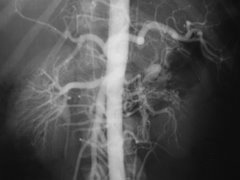
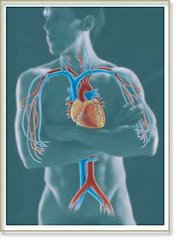
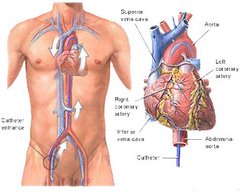
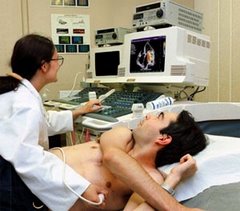
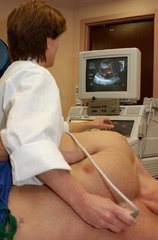
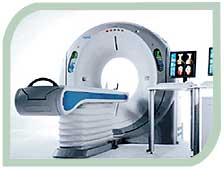
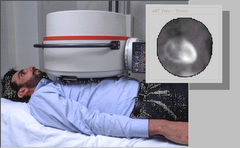
No comments:
Post a Comment